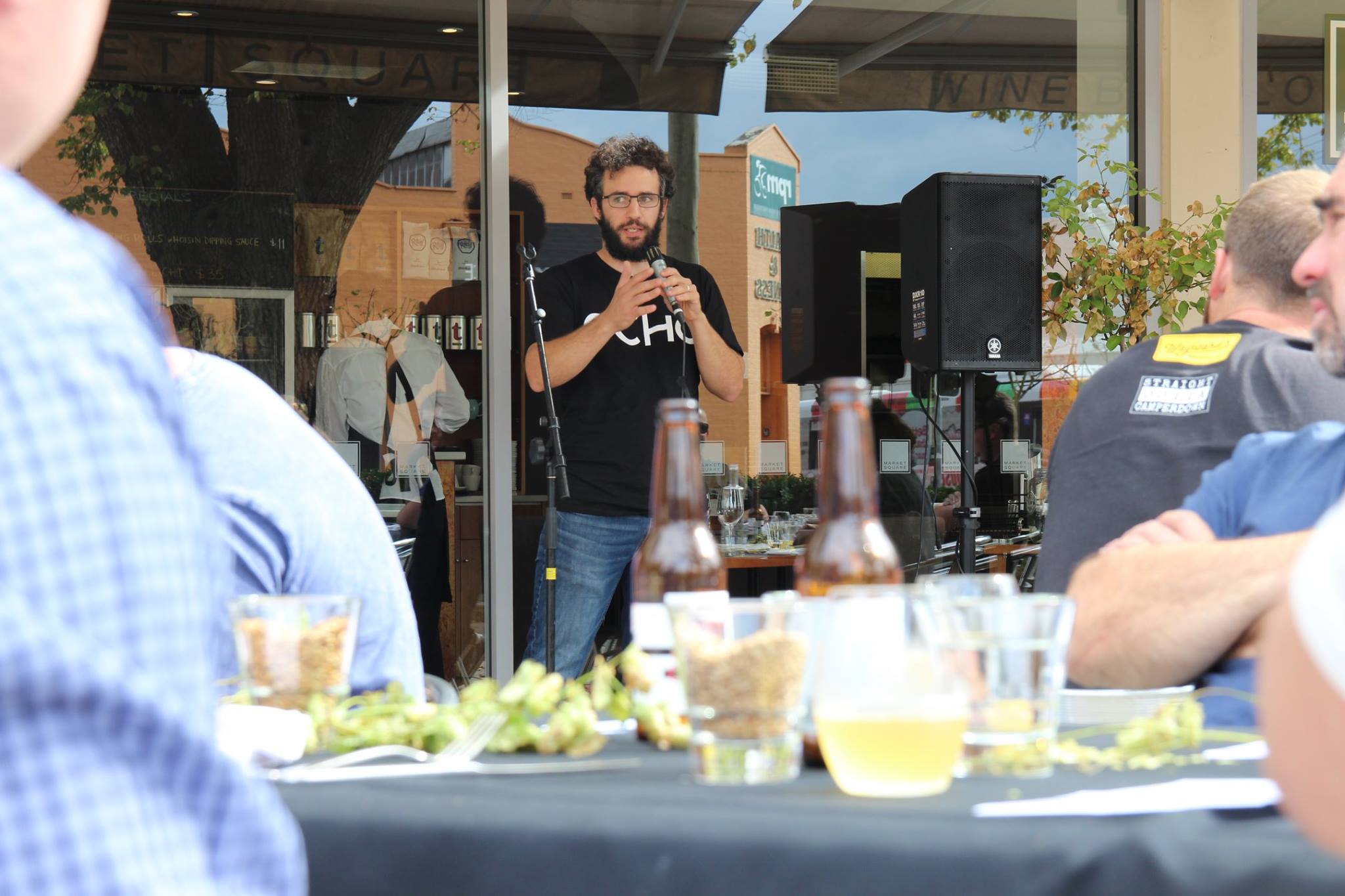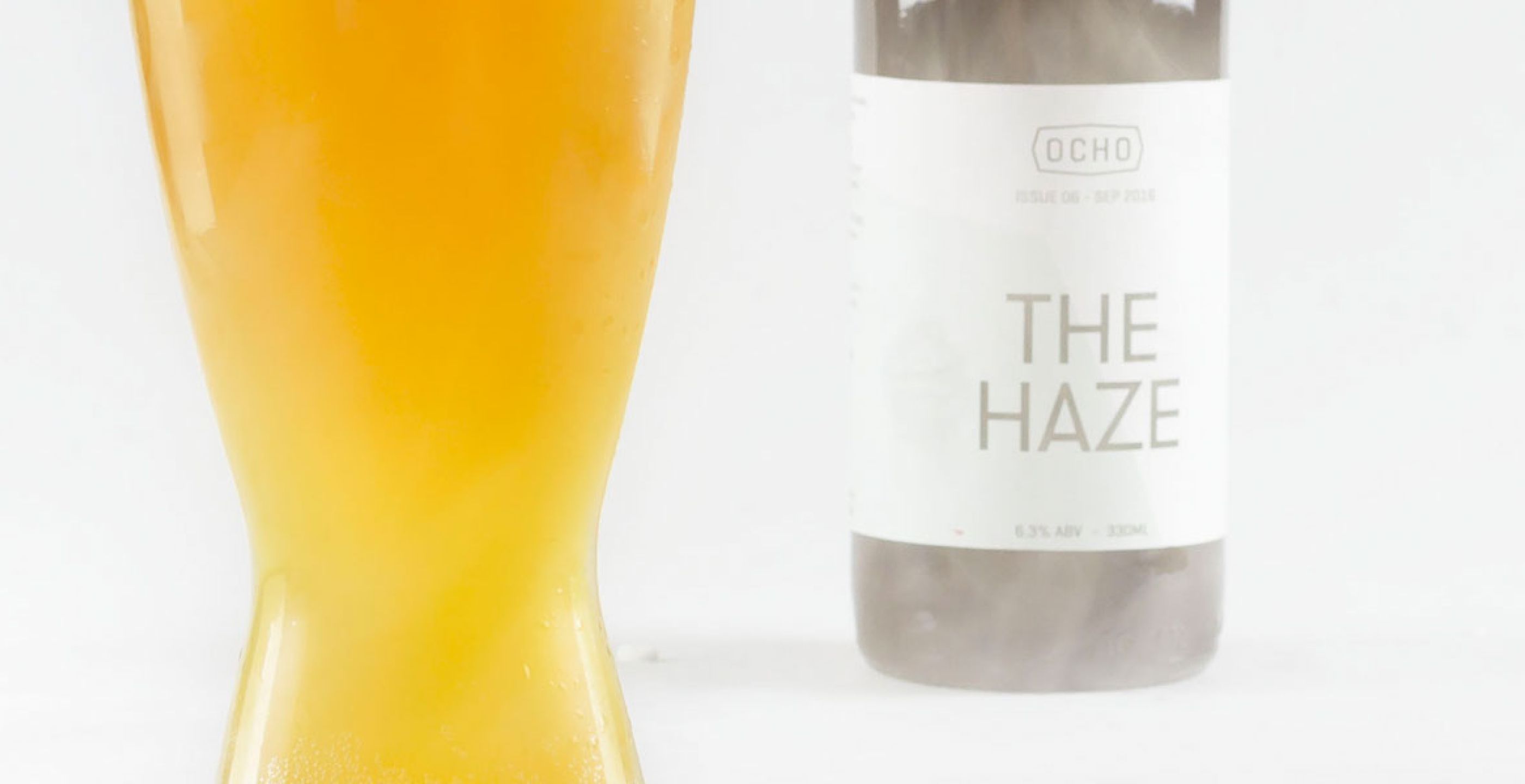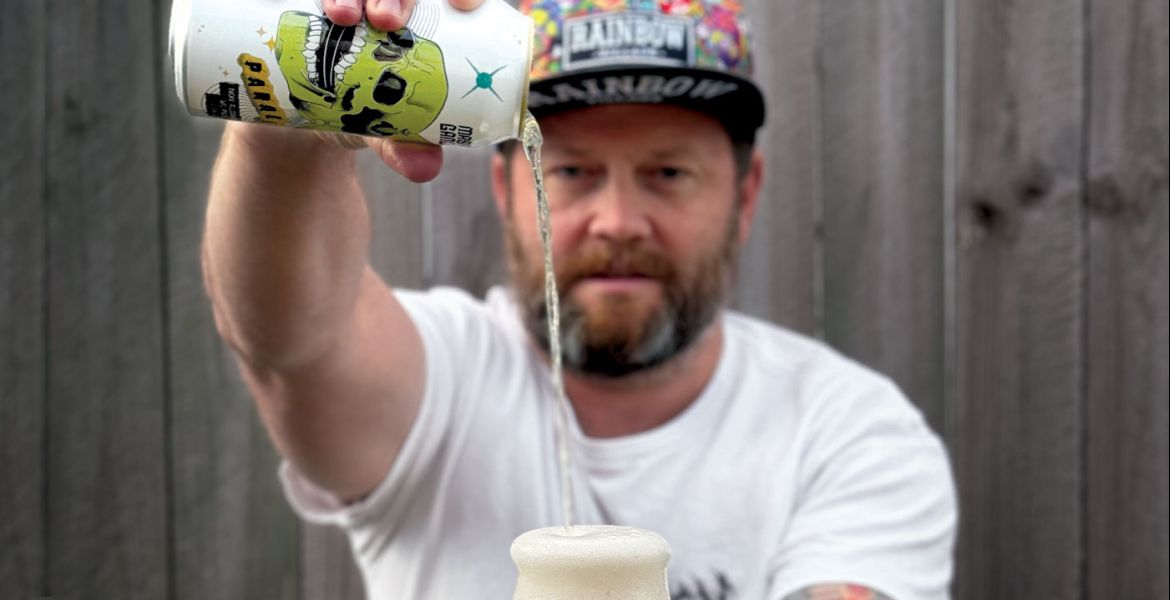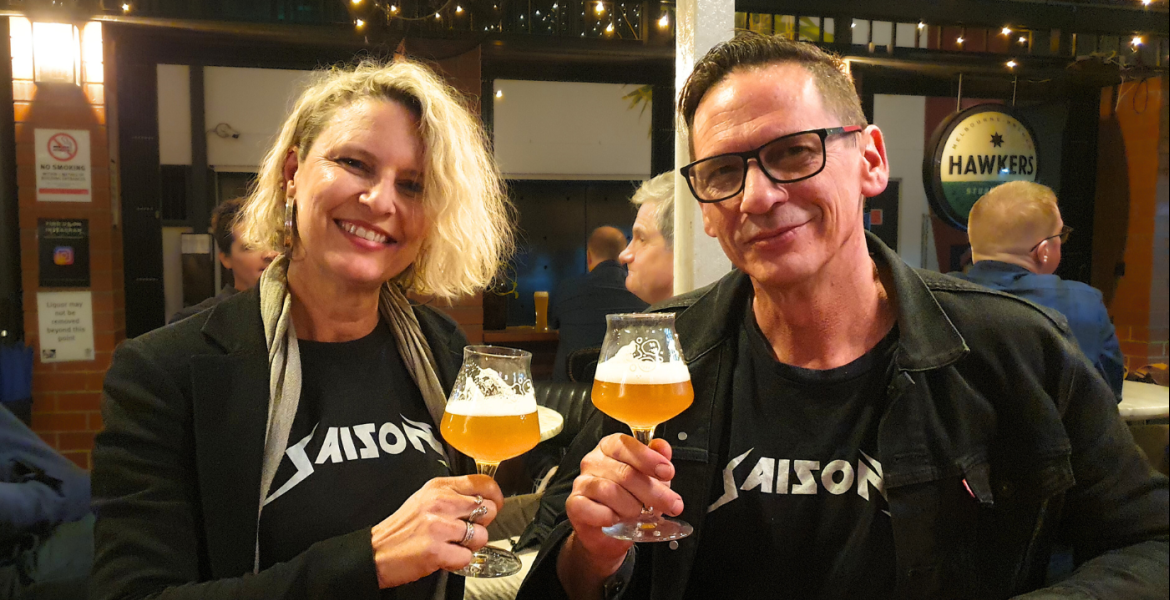Milkshake. Turbid. Breakfast juice. Low bitterness.
Beer descriptors like this would normally be cause for concern for crafty drinkers and brewers alike but for the breakout beer style of the late twenty teens – sorry, gose – these are part and parcel as the New England IPA style gathers momentum.
Frontiersman Guy Southern dove deep into the swirling, muddy pool in the company of four local proponents to find out more.
In November 1620, Captain Christopher Jones’ decision to land the Mayflower early may have been one fuelled by beer or, in his case, a lack of beer. The journey from England to what would become the United States of America had taken far longer than planned and it has been argued the captain’s concern over the dwindling beer reserves – the only potable liquid on board – played a role in the 130-odd English separatists being dropped off on Plymouth Rock and establishing a colony 900 kilometres earlier than planned.
If true, it could be argued that beer helped shape the foundation of United States of America. Now, nearly 400 years later, the six Northeastern states that make up the New England region of the USA, a region famed for its natural beauty, have become the vanguard of a beer style that’s reshaping the ever-broadening category that is IPA.
New England IPAs, sometimes referred to by the tag “Vermont”or “North East”, are largely driven by choice of yeast and a rigorous, late dry-hopping regime that together produce a beer in which hops are celebrated for flavour and aroma rather than bitterness – even more so than in other highly aromatic IPA variants. The trade off for drinkers’ delight is a turbid appearance that, without knowing the context, could be seen as a fault or lazy brewing practices.
This concern hasn’t bothered Stateside innovators like Vermont based The Alchemist, whose Heady Topper was one of the first IPAs to take this path. Other early adopters like Tree House Brewing Co, Trillium Brewing Co and Monkish Brewing Co regularly sell out of their versions of these juice bombs, even when imposing purchase limits on their customers.
Often, these sought after beers are only sold at the brewery or within a tight radius through trusted retailers due to pressure on volume and freshness, not to mention equal measures of outrage and hype. In this sense, social media, Instagram in particular, has played a massive role in the rise of a style in which some brewers have used adjuncts such as flour to achieve the desired look.
A similar Salem like style revolt might be a way off here, as the curious villagers in the Australian beer community have only started to dabble with the haze craze in the past year or so. But it is gathering momentum, so we asked four brewers who have commercially released New England IPAs locally for their thoughts.

Reid Stratton hails from the aptly named New England Brewing Co, based in Uralla, NSW, and released the Minutemen IPA earlier this year. Stu Grant, from Ocho Beer in Launceston, has been using a Vermont ale yeast in many of his beers, including 2016’s The Haze (pictured in the supplied photo at the top of this article) and more recent session IPA, Little Haze.
Brendan O’Sullivan, from 3 Ravens Brewing in Thornbury, Victoria, created an excited buzz with his Juicy IPA last year, a beer that’s already made a second appearance and is set to be canned in June. Meanwhile, Modus Operandi head brewer Dennis de Boer’s Lost Key XPA brought the New England style to Sydney’s Northern Beaches.
According to Reid: “I think people are attracted to this style for two reasons. First, a beer that smells intensely fruity and sweet is very appealing. That fresh, juicy aroma really makes people's eyes light up.
“Second, the lower bitterness level makes this style a little more pleasant for a lot of people. I myself don't really like beers with incredibly high IBUs. They leave me feeling fatigued and parched. This beer, in comparison, is much more refreshing and approachable.”
Let's Get Technical
In the case of 3 Ravens’ Juicy IPA, any thoughts that such beers are the result of lazy brewing techniques can be thrown out the window. As head brewer Brendan explains, it was one of the most technically intricate beers he’s brewed – and this is a man fond of mixed fermentations, barrel ageing, adjuncts, blending and more.
[NB: There’s some technical brewing information ahead so you may want to skip a section, but it is about the beer…]
“What sealed the deal for me was hearing OJ [Owen Johnston] from Hop Products Australia talking about ‘biotransformation’ – whereby strain-specific enzymes in yeast modify hop glycosides, transforming them into different ‘juicier' compounds,” says Brendan.
“When I realised that there was real actual science involved, it triggered thoughts about certain yeast strains either promoting or suppressing hops, and I just had to know more.”
The yeast chosen is a critical element when it comes to creating the celebrated cloudy appearance and unique taste. Many international and local examples favour a classic London ale yeast, whose lineage stretches to the Boddington’s brewery house yeast, then balance some of its characters by adjusting the water profile used. Others use a house yeast that’s developed over many years to achieve the desired results.

Says Brendan: “A yeast with low flocculation is desirable, and the appropriate enzymes, so we compensate for its high sedimentation by avoiding all mash, kettle and fermenter finings, using a very different water profile – a lower calcium, which would otherwise help clarify the beer, and a more chloride dominant balance.”
In short, the beer is not just unfiltered, but brewers might take steps to make sure it's really unfiltered.
The use of different grains is also a key element in creating the famed suspension of the New England style that supports the hop flavour, as Brendan explains.
“Protein has also become somewhat of a popular topic of late, with rye and more recently oat pale ales/IPAs, spelt golden sours, and even wheat driven Pacific style ales. It's a hot topic, but also a very valid one that relates to the subtlety of mouthfeel which has been largely overlooked by the mainstream consumer and the delicate flavour of non-malt adjuncts,” he says.
“Higher levels of protein, and the appropriate ratio of protein types, are important to promote body and the right kind, and level, of haze. The same can be said for polyphenol. Providing adequate oil early in the process to allow for yeast to perform the biotransformation is important to achieve the ‘fruit juice’ character.”
[As we said above, things are getting technical for a while, but if you’re not a brewer or scientist, bear with us a little longer…]
Finally, the main goal here is to celebrate hop flavour. New World hops like Mosaic, Galaxy and El Dorado are used to create the juice like flavours as opposed to some other classic IPA hop varieties that lend beer pine and resin like characters.
“Bitterness in IPAs is fine,” says Brendan,“but a lot of consumers’ desire is for hop aroma and flavour without excessive bitterness. In my opinion, [these beers are] an extension of the trend in IPAs to move away from bitterness and malt and to celebrate hop flavour first and foremost.
“Hop aroma is quite easy to achieve, whereas flavour has always been tricky. New England IPAs manage to capture the hop oil, thanks to the haze, and deliver it directly to the tongue and mouth, which is very unique.”
Let's Get Quizzical

So what does all of this technical brew-speak mean?
It means the New England style is created with a purpose in mind – to create a beer that is lower in bitterness but high in hop flavour and mouthfeel. This isn’t a resinous, palate-stripping, high alcohol beer, so drinkers looking for that experience are likely to be confused and disappointed with their first encounter. Meanwhile, good examples of the style are likely to win over drinkers who dislike aggressive bitterness or are new to craft beer and might be drawn in by the rounded fruitiness – at least if they can get past being handed a glass of beer that looks like it’s been dredged from the bottom of the Yarra.
Modern drinkers have been conditioned to view the clarity of beer as a potential indicator of quality so the idea of drinking a beer with the visual appeal of a FIFO worker’s sock may be a tough sell across the bar. That said, Australian brewers have an unlikely ally.
“I would argue that Australians have been happily drinking hazy beers for years,” says Reid,“namely Coopers. In fact, due to the widespread distribution of Coopers, I think most Australians are much more tolerant of unfiltered, hazy beers than Americans. Add to that the number of craft breweries who don't filter and I don't see the New England IPA style as much of an outlier here.”
Ocho founder Stu says: “There is a certain mystique around the style – partly their unique hazy appearance, and partly by virtue of being so ridiculously popular in the US, which becomes a self sustaining phenomenon. Aside from that, the style is delicious! IPAs have been huge in the craft beer scene for a decade, and New England IPAs are just a variation on the style that happens to suit a wider audience.”
As for Modus Operandi’s recent release, Dennis says “the vast majority of the feedback we’ve gotten about the beer [Lost Key XPA] is in regards to either its hoppiness or overall flavour and aroma profile. We’ve received very little feedback with regards to the appearance of the beer.
“Australians seem to enjoy beer and, if the feedback we’ve received is a testament to anything, it’s that Aussies aren’t that fussed about how ya look just as long as you smell nice,” he adds with typical eloquence.

As to whether Australians are ready for an explosion in the style, Dennis is quick to point out that quality and distribution are particularly critical.
“I think the biggest factor when considering the viability of this particular style in Australia is product handling and maintaining freshness,” he says.“It is not a beer that’s meant to be aged in any way; the sooner you drink it the better the beer experience will be.
“On the production end, that means capping batch sizes to ensure we don’t flood the market and risk product ageing on shelves. Logistically, it means cold storage and freight from brewery to bottleshop. Finally, we put a lot of pressure on sales and marketing to make sure people know it’s out there.”
The beer’s unfiltered nature means similar care needs to be taken at point of delivery too – poorly maintained taps are nobody's friend, particularly beers like these.
For all that, the momentum gathers speed. While writing this article, last year’s Australian International Beer Awards champion breweries Stone & Wood, Pirate Life Brewing, Two Birds and BrewCult collaborated on a New England style IPA to be showcased at the awards next month, while this weekend sees Melbourne’s Tallboy & Moose launching a wet hop version, Batch Brewing has to date released Juicy as Phuck and Lil’ Juuuicy at their Marrickville brewery, Hop Nation is fond of the haze too, Mornington Peninsula Brewery brewed one with Brisbane bar Brewski and, well, you get the message.
With others releasing such beers locally, it’s clear interest is strong and glasses of lurid, murky hop goo may well be here to stay.
About the author: Guy drinks and writes about beer, goes for a run most mornings and makes his own chilli hot sauce. Find more on Goodtimes Craft Beer via Facebook and Instagram.

















